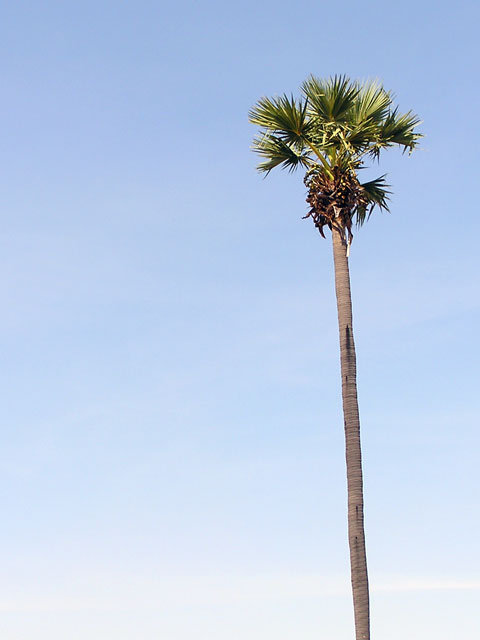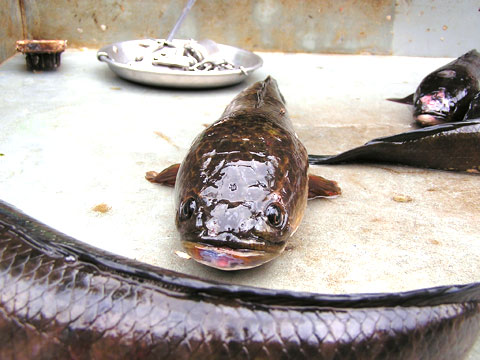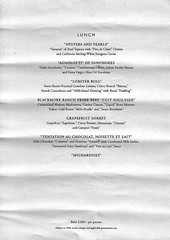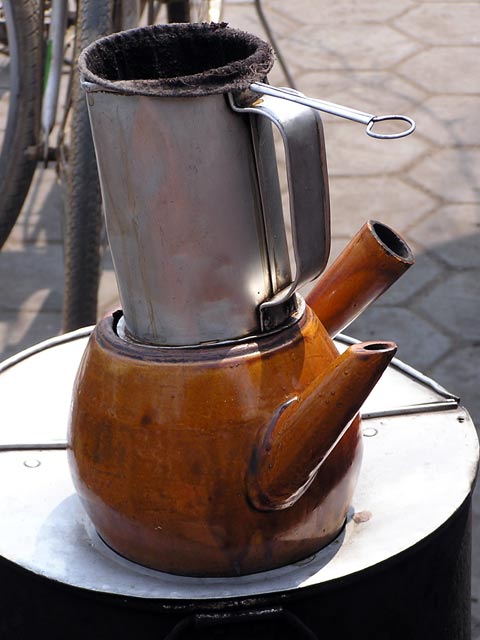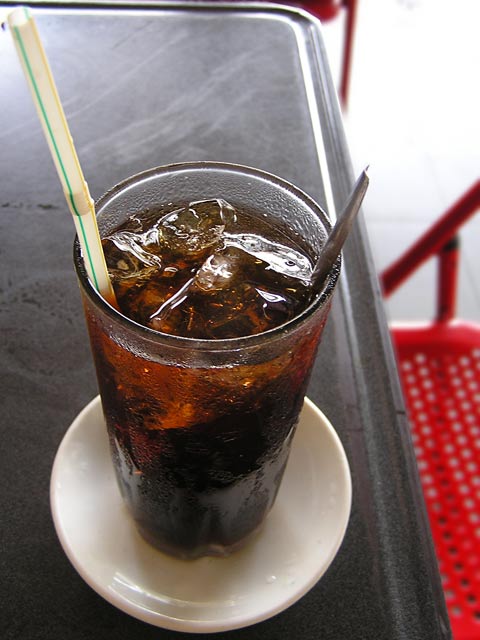There are four types of Cambodian breakfast: pork and rice (bai sach chrouk); noodles (mee cha) or noodle soup (khtieau); rice porridge (bobor); and the improvised foods of those who are starving and eat whatever they or the World Food Programme can unearth. At a rough guess, these groups equally split the population (with an outcast minority such as me who tend to only eat breakfast on weekends and therefore try to make it as decadent and calorific as humanly possible. In the view of most Cambodians, my diet is not so much unbalanced as it is unhinged; and thus somewhere outside orthodox classification).
The standard Cambodian pork and rice set is as follows: any boneless cut of pork, thinly sliced and barbecued on a wire grill over warm coals then served with a hefty plate of broken (or just cheap) rice. The pork is sometimes marinated in garlic and oil, but more often than not, is just cooked slowly over the fire to soak up the fat-induced smoke. The side is invariably pickles, most commonly cucumber. The below pickles were a piquant mix of fresh ginger, cucumber with still a hint of crispness and paper-thin slices of daikon radish.
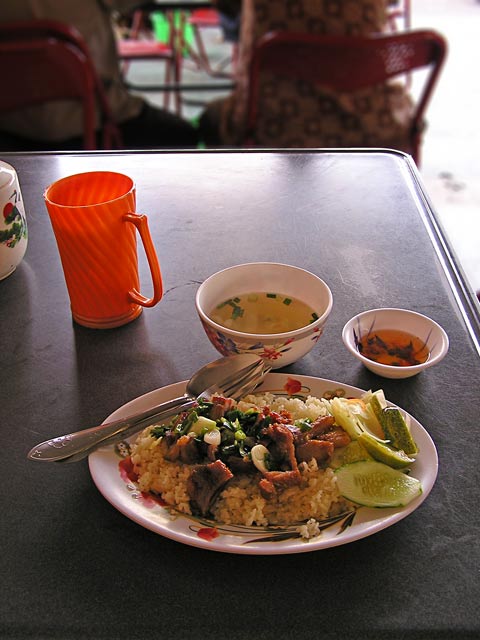
The set will include a bowl of thin chicken stock from the noodle soup master stock, topped with spring onions, and a dipping bowl of sweet chilli sauce (tuk mteis). The method of eating the stock is to either eat it uncut or take a small spoonful of rice and then top up your spoon with a little stock. The above chilli was blindingly hot which is a real rarity, because the sweetness tends to outweigh the capsaicin.
If cutlery is not already present on the table, then it will arrive in cup full of steaming and sterilising water (orange and plastic, above) and the correct etiquette is to wipe down your knife and fork with a provided napkin or toilet paper, disposing of the paper on the floor or into a provided tableside bin. Do not under any circumstance drink the water in the sterilising cup.
The eateries are at their busiest from 6:00am until 8:00am, as most locals have seemingly been up since sunrise and need a huge carb-and-lard boost to get them through to the interminable hours until the midday meal. When busy, all tables are considered communal. It is perfectly acceptable to intrude on anybody’s table and engage them in your wittiest repartee. My Khmer wit is extraordinarily limited, although everyone gets a laugh out of how I can’t properly pronounce the word for ‘glass’. Unlike Vietnam or Thailand where small breakfast vendors often lack tables, a Cambodian pork and rice vendor without seating and a rudimentary bench is an exception. Where the tables are not built from the thin metal, they are covered with a garish vinyl tablecloth which is either geometrically patterned or provided as an advertisement from a large soup or monosodium glutamate manufacturer.
By 9:00am, breakfast will be over. Small pork and rice joints will disappear entirely to be replaced by lunchtime soup, fish and rice vendors. Brunch is not an option.
Location: Pictured pork is from my coffee roasting friends at the corner of Street 432 and 155, but there is a pork-charring crew on practically every Phnom Penh side street in the mornings. The best guide to picking a great bai sach chrouk vendor is finding one where the barbecue is still smoking and pork is served directly from the grill to your plate. Most vendors buy their pork daily (as a cashflow issue rather than not having proper storage) and so freshness is guaranteed.
Continue reading Pork and Rice: The national breakfast.
